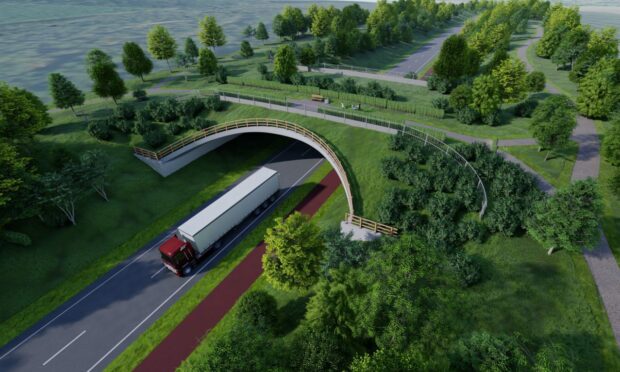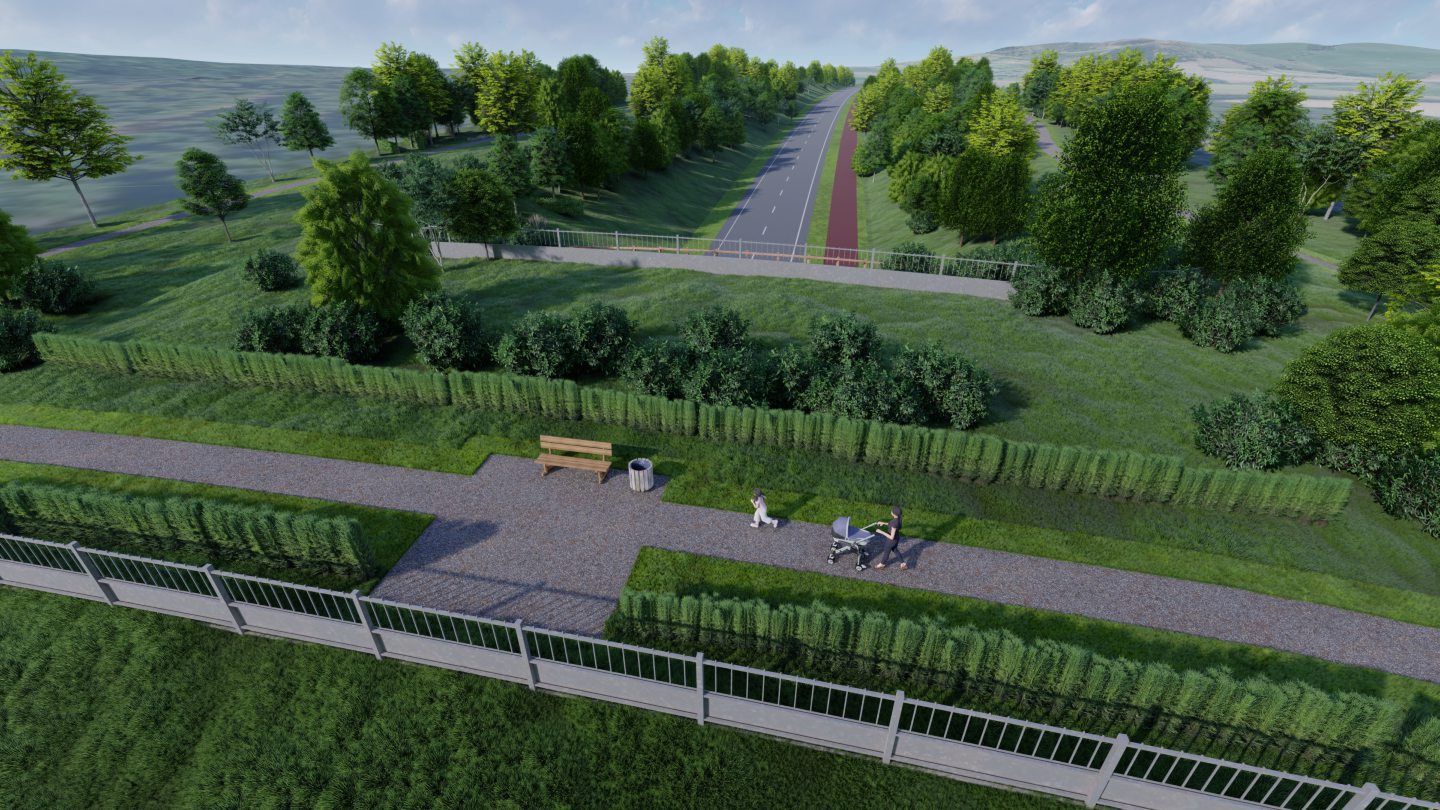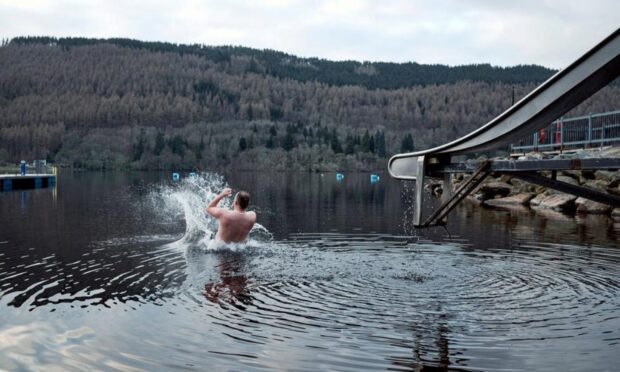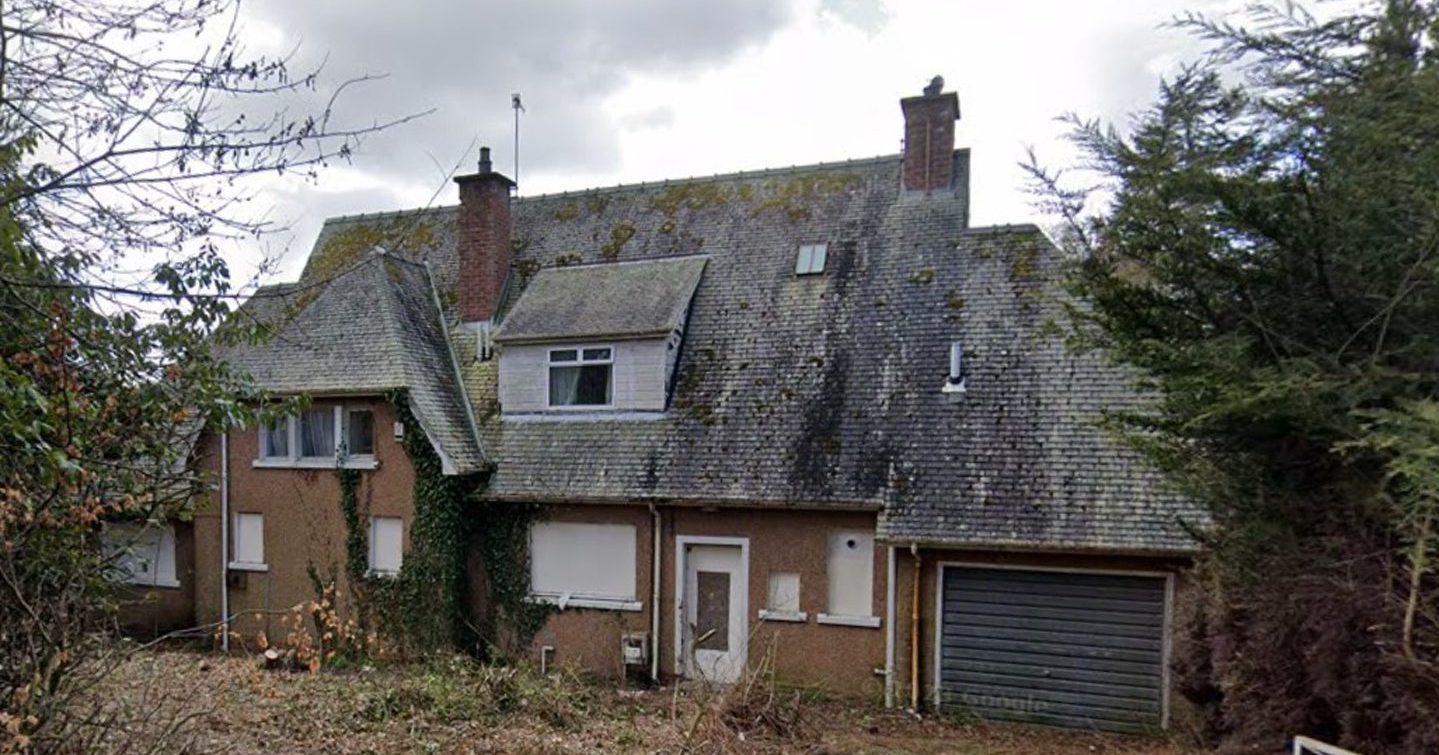Work is progressing on what will be one of Scotland’s longest wildlife overpasses.
The green bridge – which would not look out of place on an episode of Teletubbies – will allow pedestrians, cyclists, woodland animals and insects to safely cross the new Cross Tay Link Road.
It is scheduled to be completed by the end of this summer.
The pre-cast arches have been installed for the bridge which will reconnect the existing footpaths in the forest plantation at Highfield, Scone.
‘Striking aesthetic and distinctive feature’
BAM Nuttall senior site engineer Alan Limerick said the bridge’s unusual design had presented challenges.
He said: “Although not a new concept entirely, there are very few green bridges in existence in Scotland and the Highfield one will certainly be one of the longest single-span green bridges on completion.
“It runs 27.2 metres long and – at its widest point – is 33 metres wide.
“Unusually, it is narrower in the middle than it is at the ends and there is a two-metre drop between the north and south abutments.
“Building a bridge on a six-degree downhill camber does present additional challenges within the build but – on completion – the slight curve shape together with the Swiss- designed arches from BEBO will offer a striking aesthetic and distinctive feature.”
5m-wide footpath and viewing platform
While there are several examples of this type of bridge around the world there are only a handful in Scotland.
Landscaping clerk of works for the project Sean McLeod has the job of overseeing the planting and landscaping of the overpass.
He said: “Landscape planting is a significant aspect of the CTLR project and the green bridge is one of the major elements of this.
“The bridge will connect two sides of an existing woodland area at Highfield and in the narrower middle section will offer a five metre-wide footpath and viewing platform, and 14 metres of greenspace for wildlife to cross.
“Planting will be undertaken during 2023 and we can expect to see green space emerging almost straight away, and continuing throughout 2024.
“Originally this area was a monoculture of trees, but we have taken the opportunity to expand the biodiversity of the woodland, improving on what was there with a mix of broadleaf trees and conifers.
“In addition to this, we are creating a wildflower meadow which, as well as being low maintenance, also offers a better environment for bees, bugs and reptiles, and allows small mammals and birds to forage under cover.
“From an ecology point of view, creating a pass for wildlife to go over is always better than the option of tunnels going under.”












Conversation